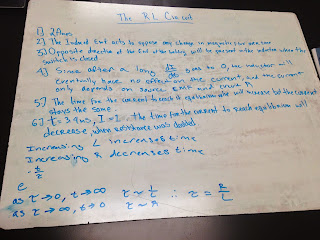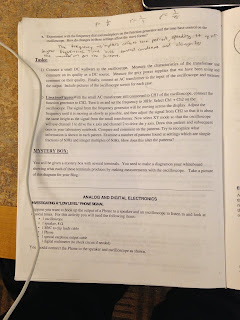| Here is a basic motor. It is a current carrying loop (rotor) in a magnetic field. One end the rotor is half covered in an insulated finish, and the other end is fully exposed. When plane of the rotor is perpendicular to the magnet, the rotor spins so the that the magnetic moment is parallel to the magnetic field. At this point, current stops running through the rotor (due to the half covered end of the wire), and there is no torque to keep the rotor in this position. The momentum gained from the initial 90 degree rotation allows the rotor to keep spinning. Then, both ends are now fully in contact with the wires, allowing a current to flow through again, reproducing a magnetic torque. This cycle continues. |

















































